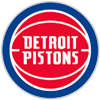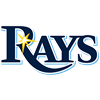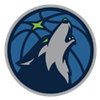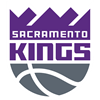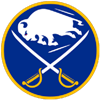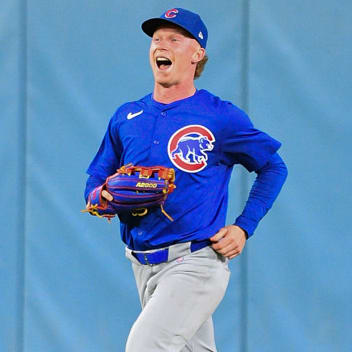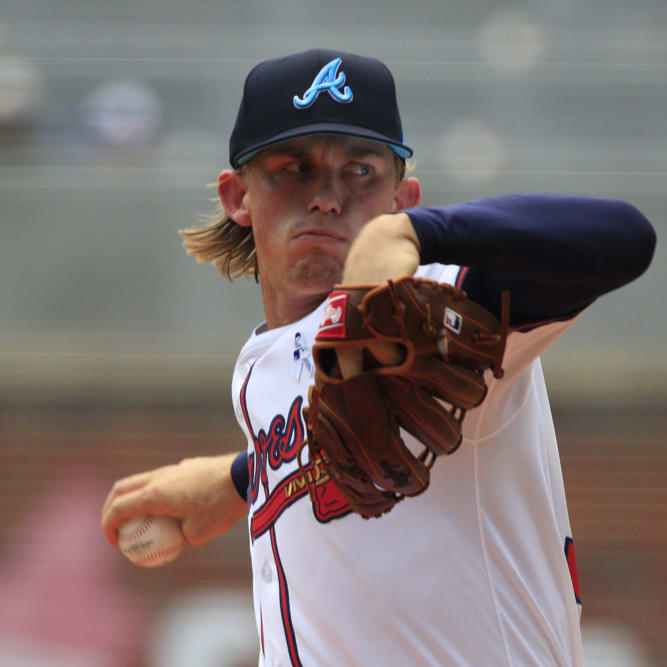The NATIONAL FANTASY BASEBALL CHAMPIONSHIP ("NFBC") has grown in a major way over the last 15 years and with its variety of offerings in both format and entry fees, it has become one of the most popular and competitive fantasy competitions. The contest is discussed extensively on podcasts, radio and in print, plus the ADP has become the industry standard. I have played since almost the very beginning and have noticed the level of competition really has ramped up recently as new (and young) people have joined the competition. Every year is different and sometimes just too many injuries will happen, but there are many in the contests who manage to be competitive on a consistent basis and I am going to try and pass along a few tips to help you achieve that. Note that I will mostly be referring to the Main Event (15-team leagues) and RotoWire Online Championship (12-team leagues), which have FAAB and an overall component to the contests, but much of this will apply to any of their contests or even home leagues.
FOCUS ON THE FINAL TWO-THIRDS OF THE DRAFT
I feel like there is too much on the first 10 rounds of drafts (especially the first round!) when discussing draft preparation. Anyone playing at this competitive level knows all the top players well and while we all have targets and fades and need to build a solid and balanced (more on that later) base in the early rounds, you are drafting great players
The NATIONAL FANTASY BASEBALL CHAMPIONSHIP ("NFBC") has grown in a major way over the last 15 years and with its variety of offerings in both format and entry fees, it has become one of the most popular and competitive fantasy competitions. The contest is discussed extensively on podcasts, radio and in print, plus the ADP has become the industry standard. I have played since almost the very beginning and have noticed the level of competition really has ramped up recently as new (and young) people have joined the competition. Every year is different and sometimes just too many injuries will happen, but there are many in the contests who manage to be competitive on a consistent basis and I am going to try and pass along a few tips to help you achieve that. Note that I will mostly be referring to the Main Event (15-team leagues) and RotoWire Online Championship (12-team leagues), which have FAAB and an overall component to the contests, but much of this will apply to any of their contests or even home leagues.
FOCUS ON THE FINAL TWO-THIRDS OF THE DRAFT
I feel like there is too much on the first 10 rounds of drafts (especially the first round!) when discussing draft preparation. Anyone playing at this competitive level knows all the top players well and while we all have targets and fades and need to build a solid and balanced (more on that later) base in the early rounds, you are drafting great players that we already know a lot about. From studying the player pool, I know what stats and players I want to attack early on, but I spend a significant amount of my prep time working on the back two-thirds of the draft as this is where you find the players who can take a big step up to the next level or just the boring players that end up being valuable on the back half of your roster.
Of course, the obvious question becomes; what do you look for in this range to find players to draft? For hitters, I am looking for younger hitters who have shown progress year over year in multiple stats (there are a million stats these days and I use a lot of them, but I really like hitters who show improvement in strikeout, walk and barrel rates) or players who were previously drafted higher and have slipped down the draft as sexier players move up, but a look at their profile shows no significant slip in skills. (I am often a big fan of these so-called "Last Year's Bums"). I am also looking for players who are about to get a step up in playing time, and it sounds simple, but you can't rack up stats if you aren't playing regularly. Playing time is king. Also, I know breaking down halves of a season is a risk of using an arbitrary endpoint, but I do always look closely at hitters who improved their skills as the season progressed as baseball is a game of adjustments and often times, players figure something out and it can be a bit hidden by a rough start to the season.
Finding gems down here is not easy and you will miss on many, but it is so satisfying when you do. A prime example of a player like this from 2020 was Teoscar Hernandez who had a history of a lot of loud contact and had improved his walk rate (I know, not the strikeouts!) and was slotted to get as much playing time as he could handle. His ADP last year in 38 Main Event drafts was 301 and he was someone Jeff Erickson and I discussed a lot in the pre-season on the RotoWire Fantasy Baseball Podcast (by the way, we record every Sunday night and talk a lot of NFBC, please tune in!) and goes to show as great as fantasy players have become, there are always breakouts to find in baseball.
When it comes to pitchers, the late rounds in the NFBC are especially difficult to find players to target as starting pitching almost always gets pushed up in March drafts and pitchers you assume will go in the 15th round end up going three to four rounds earlier as drafters panic and realize they better grab more starters. For the back half of my rotation, I am looking for pitchers who are improving the same stats as hitters with the strikeout and walk rates, but also spending more time reading offseason and spring news looking for pitchers who have added pitches or changed their pitch mix as well as studying pitchers who are newly moving into full-time roles in rotations. An added (and extremely important) element this year will be monitoring what managers and front offices say about how they will approach inning limits after every single starter last year threw limited innings in the shortened season.
ACHIEVE SOME BALANCE IN THE DRAFT
Needing balance is definitely something that is more of a factor in the NFBC than a local home league due to the fact that there is no trading and there is an overall component to the contest. While you are always trying to win your league (especially as the stakes go up), a large amount of your entry fee goes to funding the overall and while you may fully abandon that dream at some point in the season and focus solely on your league, you need to at least consider making that run when you are drafting. While teams do manage to win leagues and compete in the overall while being below average in a category, it is tough and requires you to be pretty dominant everywhere else which always seems easier on draft day than it really ends up being in-season.
Most drafters study positions to see where drop-offs occur and I think that is valuable and I do the same, but I think it's also important to do the same thing with categories to identify not only where they drop off, but where you can find bailout pockets of stats when you find yourself with a weak category as the draft progresses. This becomes especially important with saves and steals, two categories which are becoming harder to find as teams run less than ever and use closer committees while attempting to use their best relievers in high-leverage spots rather than in a traditional save situation. You will likely read many articles about not paying for saves in drafts, but with no trades and insanely competitive FAAB Sundays that always focus on saves, one needs to make sure to at least get some saves in the draft. That doesn't mean you need to draft Liam Hendriks or Josh Hader, but in a 15-teamer, I sure want to leave the table with two closers who I am confident have the job to start the season. With the variability in closers we see every year, you are very likely to need some saves during the season in FAAB, so the last thing you want to do is need them from Day 1.
SPEND TIME ON YOUR DROPS, NOT JUST YOUR ADDS
There are many columns that come out each week about who to add in FAAB (there are two really good ones on RotoWire every Sunday!), but you don't often see a lot of content regarding who to drop. Sometimes drops are easy due to a serious injury or a bottom-of-the-roster player not performing, but as we scout the market for free agents we want to bid on, it can be easy just to click guys to drop without giving it a ton of thought. Before I even look at the players available in free agency each weekend, I take a fresh look at my roster and the league standings and note players who are clear drops as well as the stats that I need to focus on. Finally, I take this time to study each position on my roster to see if I need to address any of them due to performance or injuries. Most importantly, I check the following weeks' matchups for all my pitchers and determine how many of them I plan on starting. If I have 10 pitchers I am happy using the next week, it is a thoroughly different exercise than if I realize I need a couple pitchers as I then need to dip deep into the streaming options. Everyone is busy and FAAB takes a lot of time to do correctly, but doing it more efficiently will save you time, energy and make your team significantly better off.
Regarding drops, I try to be aggressive with cutting players who are out with injuries. Whenever a time frame is announced, I always assume the back end of the estimate, especially for pitchers as MLB teams will ease them back in so you often have to wait a couple of additional weeks to be fully ready to put the pitcher back in your lineup. It also depends when the injury is, as the difference between a four-to-six week injury in April is massive compared to the same injury in July. As the year goes on, I try to get even more aggressive with injury drops. The great Scott Pianowski of Yahoo! Sports often says that if you don't regret a couple of drops at the end of the season, it likely means that you weren't aggressive enough with your moves and I fully endorse that philosophy.
GRIND EVERY IN-SEASON EDGE AND USE THE RULES TO YOUR ADVANTAGE
It may sound obvious, but grinding out every stat and taking advantage of the rules in the NFBC is immensely important. The NFBC allows for Friday switches for hitters and this is a rule that you have to take advantage of, not only for getting injured players out, but also for maximizing matchups and at-bats. Injuries during the year impact the amount of flexibility on the bench, but I try to keep an extra outfielder, middle infielder and corner infielder on the bench to give me as much chance as possible to play advantageous matchups each half-week. Another quick tip that I don't see everyone do is that if my starting middle infielder is a shortstop, my bench middle infielder will be a second baseman so you have maximum coverage and don't end up in a spot where a shortstop gets hurt and you have three second baseman. Of course, players with multi-positional eligibility help this cause and I especially like to grab a hitter who qualifies at both a middle- and corner-infield spot.
These days, we also have the benefit of pre-game announced lineups and you will be able to see if all of your hitters are playing on Mondays and Fridays. Each period, I jot down all my hitters that I would consider platooning and note all their matchups for the period and then make sure to check the whole list with announced lineups as I often make a switch when I see a player's three-game period has suddenly dropped to two. Counting stats are four of the five offensive categories and a lot of categories end up very tightly bunched at the end of the year. Every stat you can squeeze out during the year matters.
Hopefully these tips help those who have played the NFBC for years as everyone can always improve, but also for those new to the NFBC. Who knows what drafts look like this March in terms of travel of course, but I cannot recommend the NFBC Live Events highly enough as the drafts themselves are of course fantastic, but the people involved are even better and I promise you will have a great time (come up and say hi!) and hopefully end up with a chance at some cash in September.








